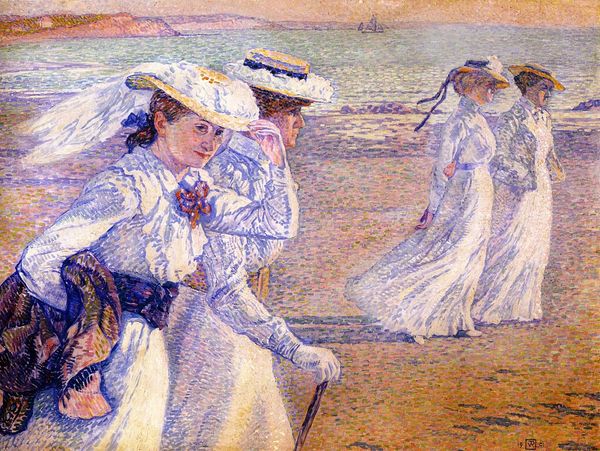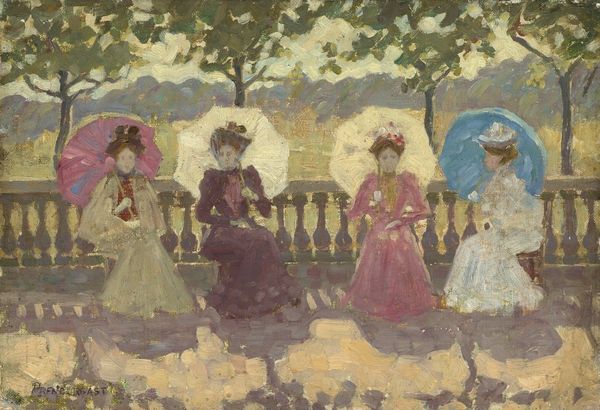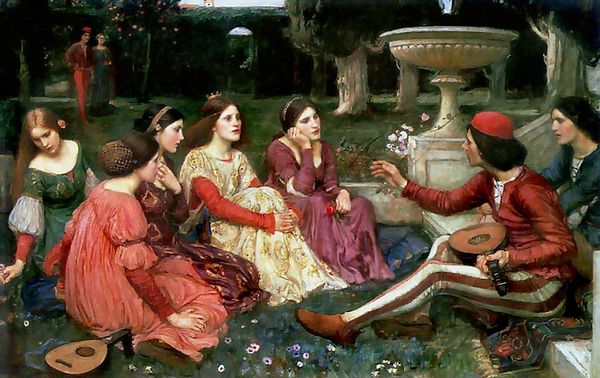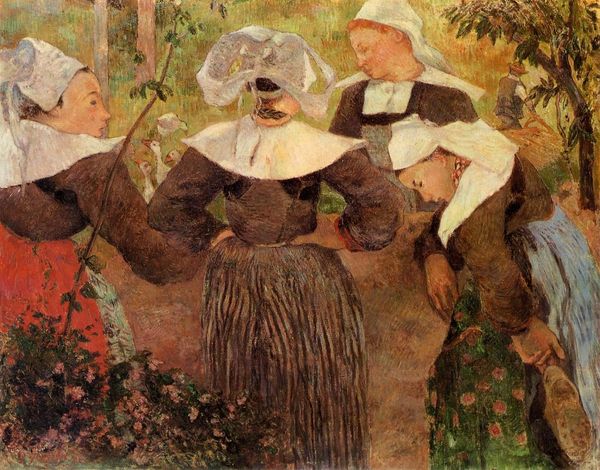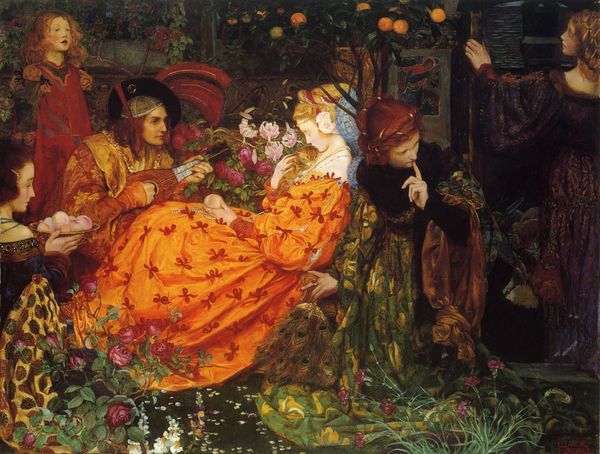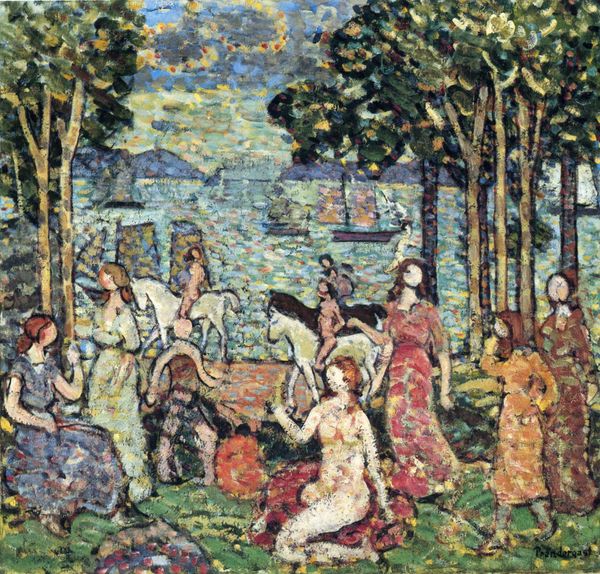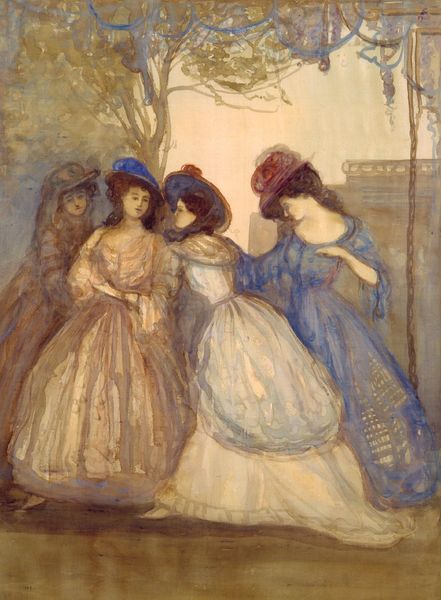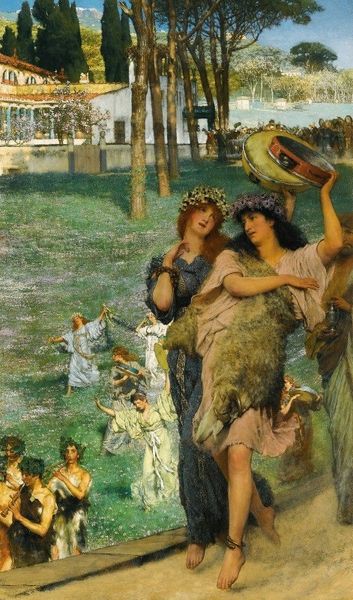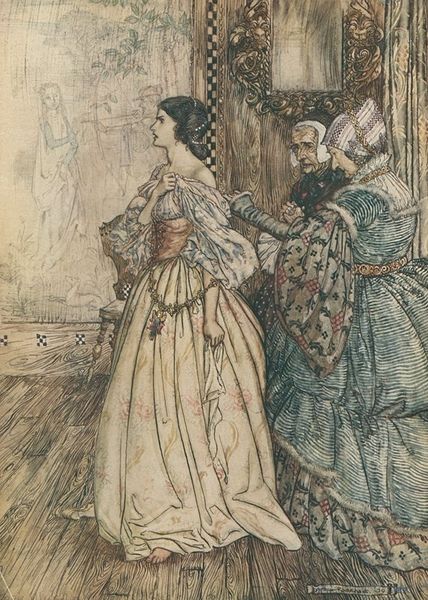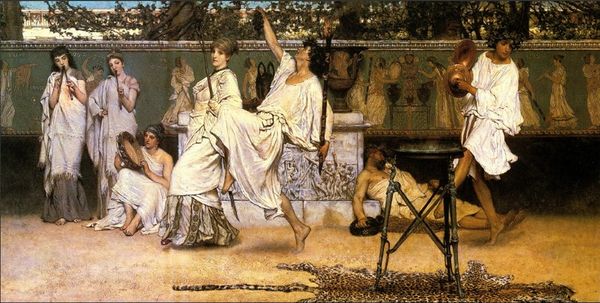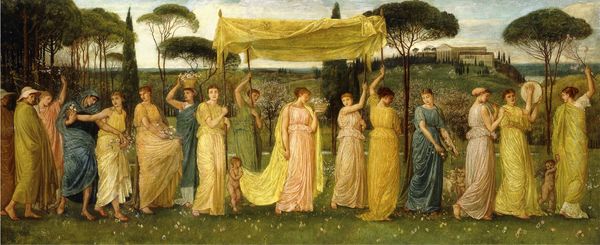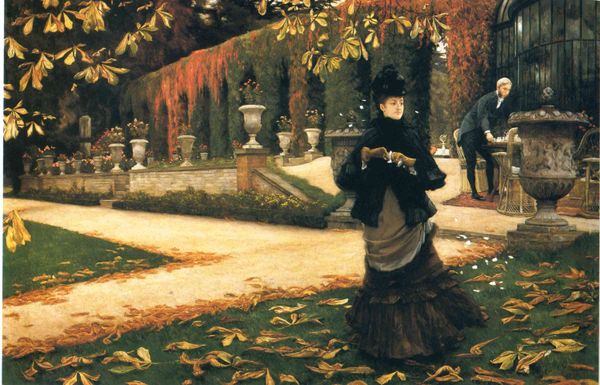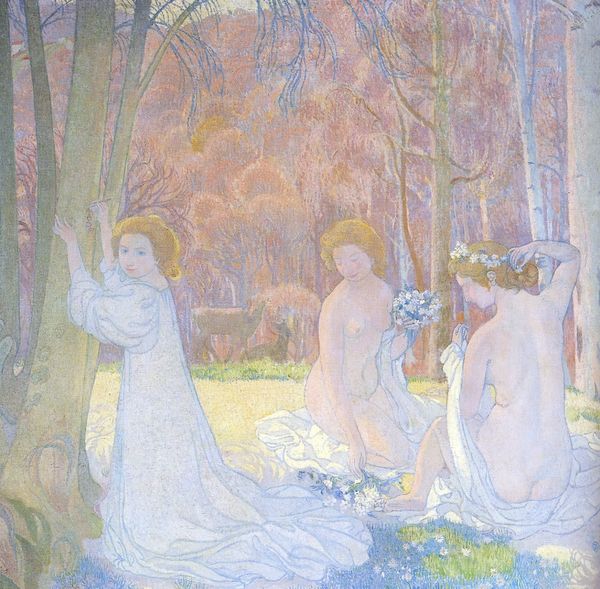
Copyright: Public domain
Curator: Today, we’ll be discussing "A Reading in the Garden" by Théo van Rysselberghe, an oil painting created in 1902. Editor: What strikes me immediately is the almost dreamlike haziness. The figures, the landscape... everything is softened, shimmering. Curator: Precisely. Rysselberghe employs a pointillist technique. Notice the distinct dots of color and the impasto creating a granulated texture. This serves to unify the composition and establish the light in every object in the work. Editor: The women, though, their faces remain indistinct. It’s less about individual portraiture, and more about the overall atmosphere, right? Are these women real, or are they symbols? Is this place in the painting, a memory or someplace yet to be visited? Curator: They're archetypes more than portraits—figures embodying leisure and refinement. Their clothing reflects turn-of-the-century trends, echoing neoclassical influences, suggesting purity and harmony with nature. We observe a dialogue between formality and natural ease, a prominent concept in this era. Editor: But there’s also a subtle feeling of distance here. The colors are muted, yes, there's green, a symbol of hope, but there are neutral tones as well, as though they exist in a gilded cage...are the women happy to be at the park reading? Or, perhaps, is this how Rysselberghe sees woman at this time in society? Trapped, but doing "normal" leisurely things like women often do? Curator: That's an interesting interpretation. Formally, Rysselberghe orchestrates space by distributing color masses evenly throughout the canvas. A grid structure supports a sense of ordered tranquility, perhaps reflective of societal norms you suggested. He has considered how the negative space impacts a sense of tranquility that he has sought after as part of this project. Editor: And the swans! The swan has long been a symbol of beauty, grace, even love and purity, mirroring the virtues expected of these women. The very classical placement in the background by an obelisk is of key importance for a trained artist such as Rysselberghe. They could even speak to the artist’s aesthetic, too! Curator: Indeed. "A Reading in the Garden" is an absorbing essay in compositional and chromatic equilibrium. It serves to reveal Rysselberghe’s fascination with impressionistic styles while offering a critical, and insightful picture of upper-class norms. Editor: So, while seemingly straightforward, this painting actually invites multiple interpretations that go beyond the surface to include history and emotion!
Comments
No comments
Be the first to comment and join the conversation on the ultimate creative platform.
